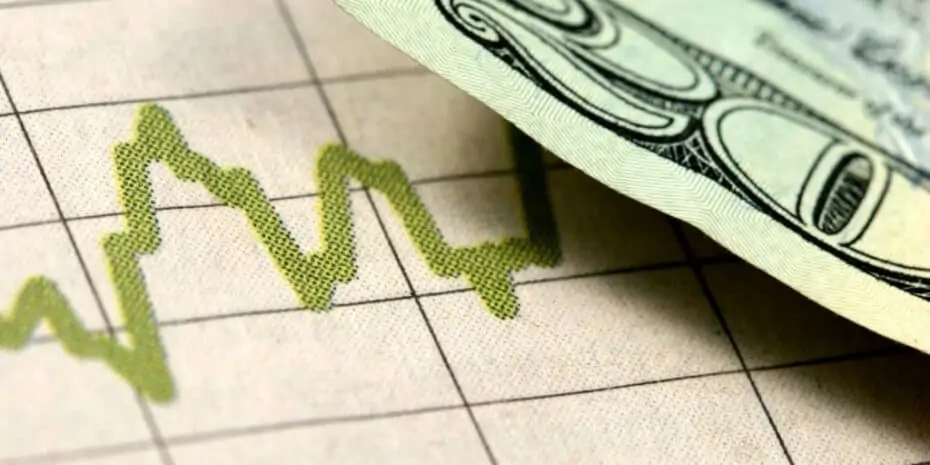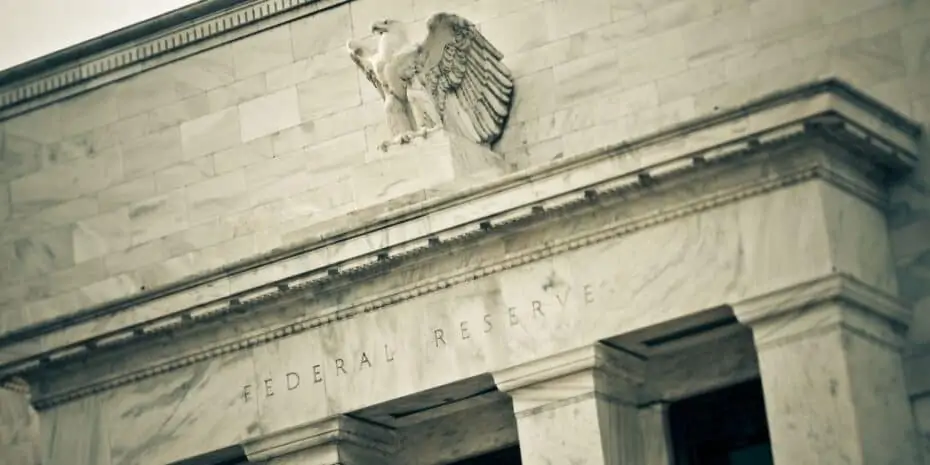What Is Macroeconomics?
REtipster does not provide tax, investment, or financial advice. Always seek the help of a licensed financial professional before taking action.
Why Is Macroeconomics Important?

Macroeconomics is one of the two major branches of economics (microeconomics is the other). This study deals with long-term economic growth and the periodic ups and downs in economic activity levels called business cycles. In other words, it gives governments an understanding of the long-term aggregate effects of their economic decisions.
Macroeconomic insights matter not only to economists and policymakers, however. Although not all events directly affect everyone, having a healthy awareness of what is going on in the economy can help consumers and entrepreneurs make sound policies.
Those watching or reading news about inflation, taxation, unemployment, mortgage rates, property sales, rental prices, stock market trends, national debt, and geopolitics, among others, are likely to make big-ticket purchases, pick investments, and apply for credit more wisely. In other words, macroeconomics allows individuals to study microeconomic behavior and characteristics concerning the whole[1].
6 Main Macroeconomic Objectives
There are six objectives when studying and analyzing macroeconomic models. Policymakers use these objectives as guidance to predict market conditions or craft decisions that will affect the national, regional, or global economy.
- Sustainable economic growth. Measures like the gross domestic product (GDP)[2] help economists project whether a country’s economy will likely expand or contract in the future. GDP per capita, home building, residential property sales, and construction spending are other major economic indicators in the United States.
- Low inflation. Inflation occurs when the value of a currency goes down. Deflation happens when the value goes in the opposite direction. The consensus is that slight inflation is favorable for the economy as it encourages consumer spending.
- Low unemployment rate. Full employment means that most of the people who are available for work and want a job have found the opportunity to make money and contribute to the economy. On the other hand, high joblessness is usually an indicator of hardship.
- Satisfactory current account. Current account refers to transactions in goods and services, cross-border investment earnings, and one-sided transfer payments (such as worker remittances). Ideally, a country should have trade surpluses (i.e., adequate reserve currency) with other countries and earn consistent investment income to grow its economy in a sustainable way.
- Manageable national debt. The national debt is the amount of money owed by a country to creditors outside of itself. A government raises funds through borrowing to spend more than its overall income. The greater the national debt relative to the size of the economy (known as the deficit), the more burdensome interest payments are[3].
- Stable exchange rate. Currency fluctuations can impact many aspects of an economy. Changes to the value of a currency against another are inevitable because of floating exchange rates. However, stable currency appreciation or depreciation is what matters. Non-volatility enables the winners and losers of a currency fluctuation to adjust more easily.
Criticism of the 6 Main Objectives
Some experts believe that equity and environmental issues should also be front and center in macroeconomics. In addition, achieving some of the said objectives would come at the expense of others.
For instance, rapid GDP growth could accelerate inflation. When the economy is strong, the competition among businesses tends to increase, and so does the demand for skilled talents. In hopes of attracting the best people in the labor market, companies would be forced to offer higher wages, driving up their expenses in the process.
Another example is when a government decides to impose tax cuts to boost the disposable income of workers. This strategy could spur consumer spending. But it could also lead to future budget deficits when the national income would fail to grow big enough to cover the lost tax revenues.
There are ways to avoid sacrificing one macroeconomic objective in favor of another. However, it would be difficult to restructure the economy properly without implementing the right reforms.
How Do Governments Influence Macroeconomics?
A government can use various tools at its disposal, called macroeconomic policies, to carry out its overall economic policy. In the U.S., the two main ones are fiscal policy and monetary policy[4].
Fiscal Policy
Fiscal policy centers on public spending and taxation[5]. Congress has direct control over the nation’s fiscal policy, but the legislative branch usually serves the interests of the executive. The president uses spending levels and tax rates to influence the economy.
Fiscal policy is either expansionary or contradictory. An expansionary policy is a means to stimulate the economy by spending more and/or reducing taxes. A contradictory policy is about slowing economic growth down to a healthier level by spending less and/or raising taxes.
Monetary Policy
Stabilizing prices, maximizing employment, and moderating interest rates over the long term are the ultimate goals of monetary policy. In the United States, these are the responsibilities of the Federal Reserve[6].
To implement sound monetary policy, the Federal Reserve can trade government securities, adjust the interest rate it charges to financial institutions on short-term loans, and set the amount of cash reserve banks must hold.
Areas of Study in Macroeconomics
Economists and policymakers study sub-disciplines in macroeconomics to draw up a model of a national economy. They use this model to predict economic growth and formulate a suitable economic policy.
Three of these topics include macroeconomic factors, theories, and trends.
Macroeconomic Factors
Macroeconomic factors relate to a large aspect of an economy, affecting a significant part of the population. They can be natural, fiscal, and geopolitical events, which can serve as reliable indicators of economic performance. Economists usually pay attention to GDP, unemployment, and inflation of these indicators.
There are three types of macroeconomic factors: positive, negative, and neutral[7].
1. Positive
These events contribute to the expansion of the economy. Deflation, or the general decline in the prices of goods and services, is a good case in point. It can encourage consumer spending, generally raising the standard of living[8]. Higher revenues of public companies, in turn, can raise the value of their stocks.
2. Negative
On the other hand, these events threaten the health of an economy. The prospect of political instability due to war is a classic negative macroeconomic factor. Armed conflict can disrupt economic activity, displace people, and damage property.
Likewise, highly destructive natural disasters can wreak havoc on an economy. Category 5 hurricanes, massive earthquakes, and the like have the potential to cripple state and regional economies.
3. Neutral
Although these events are neither positive nor negative, their implications on the economy depend on the intent of the actions that lead to them and their consequences.
A trade embargo on certain imports is a phenomenon exemplary of a neutral macroeconomic event. This restriction can tilt the balance in favor of local producers, benefiting the economy of the government that imposed the ban or tariff.
However, this protectionist policy can backfire. If the affected countries retaliate, it may wind up hurting the national economy instead of helping it, such as a “trade war[9].”
Macroeconomic Theories
Proponents of macroeconomics use theories of national income, money, employment, international trade, and general price level to explain different phenomena.
Macroeconomic theories are not baseless, but they do have shortcomings. They cannot shed light on the prevailing conditions in society alone, which means they may sometimes account for real-world factors[10]. Good economists also take regulatory and trade policies into account.
A purely macroeconomic approach can result in overgeneralization. This branch of economics emphasizes aggregates (total amounts), disregarding individual data. Such statistics do not always hold significance, for they often neglect the differences in single figures.
Aggregates can be helpful when drawing conclusions on a mass level and with society as a whole in mind. But they can fall short when interpreted for individual activities and participants in the economy.
Macroeconomic Trends
A macroeconomic trend is a pattern of events or a condition that is likely to persist in the immediate future and shape the lives of a considerable portion of the population.
While trends are expected to continue over the short term, at the very least, an unpredictable event, also referred to as “black swan,” can suddenly change the complexion of an economy and bring about severe, potentially lingering consequences.
No phenomenon in recent memory fits the definition of a “black swan” event better than the COVID-19 pandemic. It has set off a worldwide health crisis, triggered lockdowns, destroyed the livelihoods of countless individuals, and shrunk the global economy.
The macroeconomic trends prior to the COVID-19 outbreak quickly went out of the window. And then new trends emerged.
The pandemic has affected most industries one way or another. In real estate, the residential properties in many major US markets took a nosedive due to economic uncertainty, health concerns, and stay-at-home orders.
Despite the far-reaching effects of COVID-19 on national economies across the world, the pandemic was not all bad. Because of it, the world has seen the most significant drop in carbon emissions in history[11]. It has also sped up the shift to e-commerce and has made telecommuting the norm.
Takeaways
Macroeconomic research is the study of understanding the complexities of any economy. Economists pay attention to key factors and events that may positively or negatively impact a country’s financial standing. In case an economy does not perform as hoped for, government leaders can use policy instruments at their discretion to steer it in the right direction.
However, macroeconomics is not perfect. It should not be the sole basis of any conclusion on the status of an economy. Nevertheless, it is imperative to be aware of macroeconomic phenomena and trends and understand how they affect everyday life.
Sources
- Agarwal, M. (n.d.) Top 9 Importance of Macroeconomics – Discussed! EconomicsDiscussion.net. Retrieved from https://www.economicsdiscussion.net/macroeconomics/top-9-importance-of-macroeconomics-discussed/7569
- Frazee, G. (2019.) What is GDP and is it the best way to measure the economy? PBS NewsHour. Retrieved from https://www.pbs.org/newshour/economy/making-sense/what-is-gdp-and-is-it-the-best-way-to-measure-the-economy
- Peter G. Peterson Foundation (n.d.) What Is the National Debt Today? Retrieved from https://www.pgpf.org/national-debt-clock
- Corporate Finance Institute. (n.d.) What is Macroeconomics? Retrieved from https://corporatefinanceinstitute.com/resources/knowledge/economics/macroeconomics/
- Horton, M., El-Ganainy, A. (2020.) Fiscal Policy: Taking and Giving Away. International Monetary Fund. Retrieved from https://www.imf.org/external/pubs/ft/fandd/basics/fiscpol.htm
- The Federal Reserve System. (n.d.) Overview of the Federal Reserve System. Retrieved from https://www.federalreserve.gov/aboutthefed/files/pf_1.pdf
- Smigel, L. (2021.) Macroeconomic Factors: What Are They? Analyzing Alpha. Retrieved from https://analyzingalpha.com/macroeconomic-factors
- Nielson, J. (2011.) 3 Economic Benefits of Deflation: Opinion. TheStreet. Retrieved from https://www.thestreet.com/opinion/3-economic-benefits-of-deflation-opinion-11012356
- Hass, R., Denmark, A. (2020.) More pain than gain: How the US-China trade war hurt America. Brookings. Retrieved from https://www.brookings.edu/blog/order-from-chaos/2020/08/07/more-pain-than-gain-how-the-us-china-trade-war-hurt-america/
- Investopedia. (2020.) Macroeconomics, ed: Rasure, E. Retrieved from https://www.investopedia.com/terms/m/macroeconomics.asp
- E&T (2020.) Largest CO2 emissions drop in history due to Covid-19 pandemic. Retrieved from https://eandt.theiet.org/content/articles/2020/10/covid-19-pandemic-caused-largest-co2-drop-in-history/







